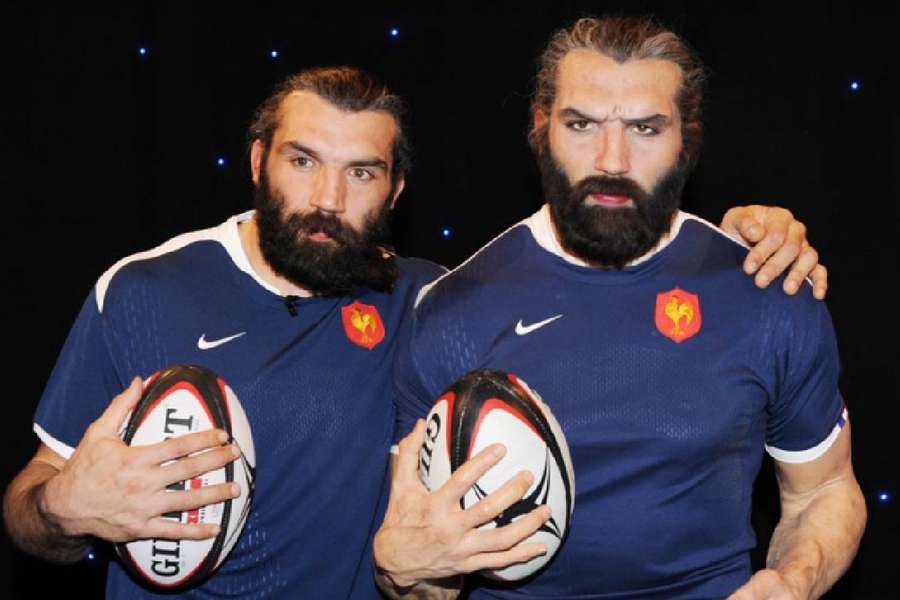Sébastien Chabal and Jonah Lomu: Two icons of modern rugby

And what if these two had faced each other at the top of their game? At the beginning of the 21st century, Jonah Lomu and Sébastien Chabal crossed paths in two test matches between New Zealand and France. The former was a mega-star, the latter not yet. Their two confrontations will remain anecdotal in time.
Lomu, already at the end of his career, had revolutionised rugby in the mid-90s. A winger cut like a second-rower with a power rarely equalled since. When Lomu burst onto the international scene at the 1995 World Cup, the world was stunned.
That was particularly so in the semi-final against England - the pinnacle of his career. The English were ready to take up the New Zealand challenge but they had no idea what they were about to face - a bus. Lomu scored four tries in characteristic style - through brute force.
At the time, the writer of this article was just 12 years old and there was a sea change in the way rugby was approached. There was no need for a game plan anymore, Lomu was the game plan. Finding him well-placed in an attacking position was a guarantee of progress and often of getting over the line.
The match against the English was a perfect illustration of this - there was no need to attack the advantage line too much because Lomu could do it better than anyone.
It was a plan that backfired against the All Blacks in the final, with South Africa's Springboks finding a way to limit the damage. But never mind, rugby finally had a huge superstar to launch its entry into professionalism.
Interviews, events, video games - it all followed and the hype train is still running today as Lomu is the ultimate example of what a winger can be at its peak.
But what Lomu really initiated was a change in mentality. Rather than teaching weight training to rugby players, we started teaching rugby to players of great stature. Then, you just need to figure out what position to play them in as long as it's spectacular and effective.
Chabal is not necessarily of this school, having already started playing rugby at that time. But his size and looks made him a darling of French rugby, even though he was far from the most fundamental element of the team during his career.
When the Rugby World Cup arrived in France in 2007, a figure was needed to represent the event. Although not an indisputable starter because of his propensity for making too many fouls, he had nevertheless made a name for himself a few months before... against New Zealand with just two actions - two huge tackles.
With the first, he disintegrated Chris Masoe, not the smallest player in the team. But with the second, he simply smashed Ali Williams' jaw. His reputation grew as quickly as did his beard - the Caveman was born. It's amazing what a long beard can do for a man!
And during the big match in France, he had the crowd roaring every time he took the ball, particularly against Namibia, when he scored a Lomu-style try by piercing the opposing defence for 50 metres. He was the best-known rugby player in France at the time, even though he was rarely a starter and had little impact on Les Bleus' fortunes. But, fame doesn't stop at details like those.
Two icons with one thing in common: A meagre record.
Neither have been world champions and it's still a shame that two of the most famous rugby players in modern rugby haven't won the supreme title. Despite three Tri Nations for one and two Six Nations championships for the other, it's still not enough.
Nevertheless, when you think of France and New Zealand in rugby, there are two names that quickly spring to mind.
It was in New Zealand that the legend of Chabal first emerged, not to mention the fact that during the rematch at the 2007 World Cup, the image of the Caveman staring down the haka is now famous the world over - even though he was a substitute in that match.
Lomu knocked the French team on their arses in the 1999 semi-final but it was Les Bleus who achieved the win that day. Nevertheless, the highlights of that match will live longer in the memory than the result of that legendary match, one of the finest in the history of the World Cup.
Nowadays, the best-known players between the sides are Antoine Dupont and Beauden Barrett, two world-class competitors in their respective positions but neither with the charisma of their predecessors.
Lomu and Chabal have established their reputations deep in the collective imagination but not always for the right reasons. Nevertheless, it's fun to think - what if they had actually played against each other? Or better still, what if they had played together?
